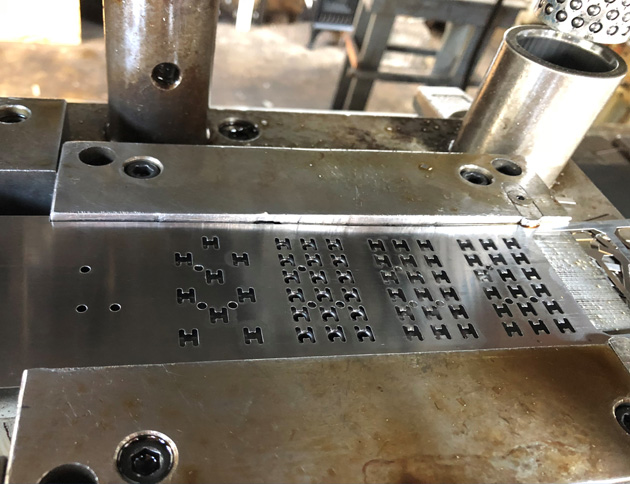Discovering the World of Metal Stamping: From Design to Manufacturing
Within the world of manufacturing, metal stamping attracts attention as an accurate and reliable method for forming steel sheets into numerous kinds with exceptional consistency. From the initial style stage where detailed patterns form to the detailed production procedures, metal marking is a blend of creativity and design. Diving right into this world unveils a complex interplay of creativity and technical mastery, providing a look right into a world where innovation meets craftsmanship.
Background of Steel Stamping
Steel marking, a commonly used manufacturing process today, has a rich background that dates back to old times (Metal Stamping). The beginnings of steel stamping can be traced to old people such as the Egyptians, who utilized marking methods to embellish fashion jewelry and accessories with detailed layouts. With time, metal marking progressed, with people like the Greeks and Romans using it for producing coins and decorative products

In the 20th century, steel stamping remained to develop with the integration of automation and computer system numerical control (CNC) innovation. These developments better boosted the efficiency and accuracy of steel stamping procedures, making it an important part of contemporary manufacturing across sectors such as automobile, aerospace, and electronic devices. Today, metal marking continues to be a crucial manufacturing process, incorporating tradition with advancement to meet the demands of a constantly developing sector.
Design Factors To Consider and Prototyping
Layout factors to consider in steel marking consist of product option, component geometry, tooling layout, and manufacturing usefulness. Tooling layout plays a substantial duty in the success of steel marking jobs, impacting component precision, device durability, and production performance.
Prototyping is an essential stage in the steel stamping process that allows engineers to test the layout, confirm manufacturability, and make essential changes prior to full-blown production. Prototyping helps identify possible concerns early, saving time and costs in the future. It additionally supplies a chance to optimize the design for performance and top quality. By meticulously taking into consideration style aspects and making use of prototyping, suppliers can enhance the metal marking procedure and achieve top quality, cost-effective manufacturing results.
Tooling and Devices Basics
Thinking about the crucial duty that tooling style plays in the success of metal marking jobs, recognizing the crucial tools and equipment called for is critical for achieving reliable production outcomes. Tooling is a fundamental facet of metal marking, as view it it directly impacts the top quality and uniformity of the end products. Necessary tools consist of dies, strikes, and components, which are custom-made to form and develop the steel right into the desired components. Dies are the key tool made use of to cut and create the metal, while strikes help develop holes or certain shapes. Components hold the metal in area throughout the marking process, making sure precision and repeatability. In addition, tools such as stamping presses, feeders, and coil handling systems are important for automating the marking procedure and raising performance. Buying premium tooling and devices not just boosts manufacturing performance yet additionally leads to higher precision, reduced waste, and general expense savings in metal marking procedures.
Manufacturing Refine and High Quality Control
Efficiently handling the manufacturing process and applying robust high quality control measures are necessary for ensuring the success of steel marking projects. The manufacturing procedure in metal stamping entails a series of steps that have to be carefully collaborated to achieve ideal outcomes.
Quality control in metal marking is extremely important to provide products that meet the called for requirements. By preserving strict official website quality control criteria, makers can maintain their credibility for delivering high-grade steel stamped products.
Applications and Sector Insights
In the realm of steel marking, the effective application of manufacturing processes and quality control steps directly influences the effectiveness and integrity of numerous market applications and offers important understandings into the industry's operational dynamics. In addition, steel stamping assists in the production of numerous home home appliances, consisting of fridges, cleaning devices, and ovens, by offering cost-effective options for making sturdy and complex parts. Comprehending the applications i thought about this and market insights of metal marking is vital for maximizing manufacturing procedures and boosting item quality across different fields.

Conclusion
Design factors to consider, prototyping, tooling, tools, production procedures, and high quality control are crucial facets of steel stamping. With its widespread applications and sector insights, metal marking continues to be a functional and effective manufacturing procedure.